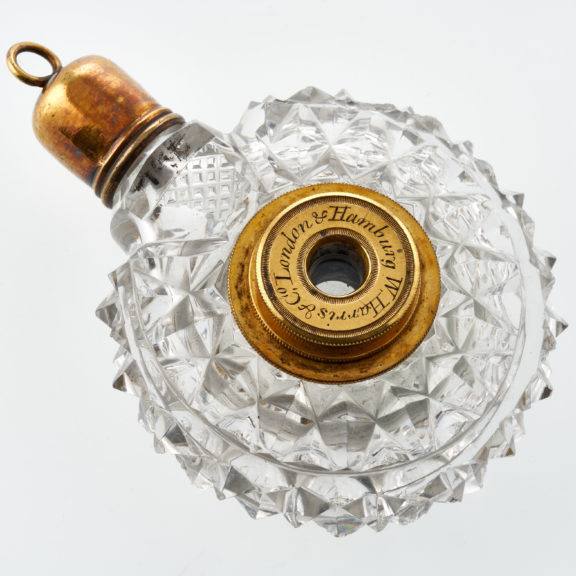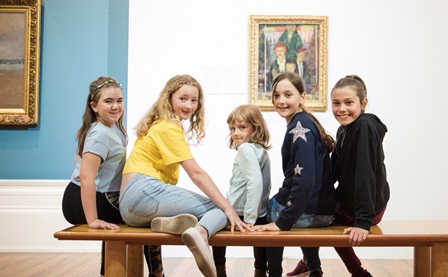Scent bottles
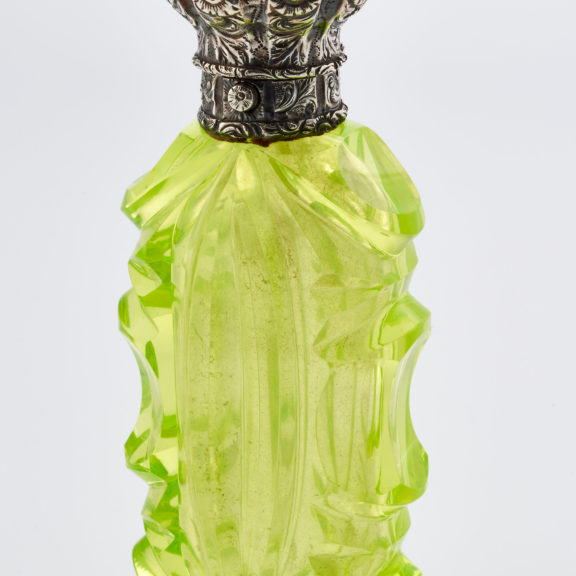
Vaseline Glass Scent Bottle
Object number: F503
This vibrant yellow/green ‘Vaseline’ glass scent bottle gets its colour from uranium oxides. If exposed to ultra-violet light it will glow in the dark! However, there is no need to panic, as there are no safety risks from this type of glass because the radiation levels are the same as those that occur naturally in our environment. Coloured glass like this developed during the nineteenth century, with Bohemia (now the Czech republic) leading the way. Lighter coloured glass like what is used in this bottle is more sensitive to light damage making it more likely for the perfume inside the bottle to go off.
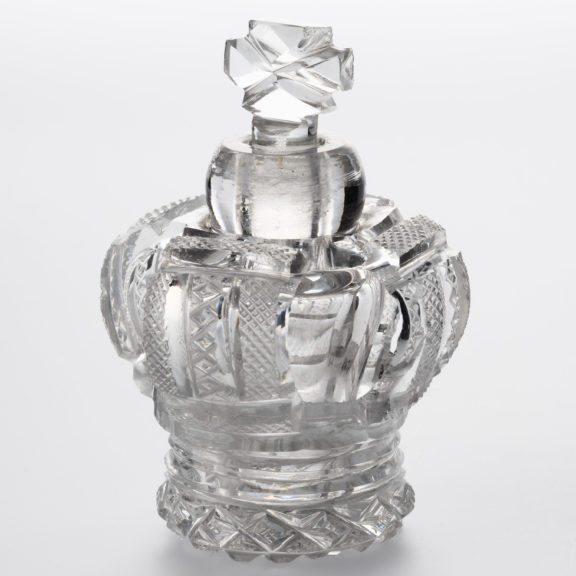
Clear Cut Glass Crown
Object number: F2476
This cut glass clear scent bottle in the shape of a crown is from the nineteenth century when the cut glass industry started to develop in Britain. Though cut glass had existed before this it had been a slow and expensive process that was made by hand, later technical developments in the steam industry meant that items could be made faster and at a reduced cost. British cut glass was of a very high quality because it used lead glass, which is harder, sharper and can be polished to a high shine. Much of the cut glass from this period actually came from Ireland, which at the time was exempt from the increased tax on the weight of glass that had been imposed on English glass-makers!
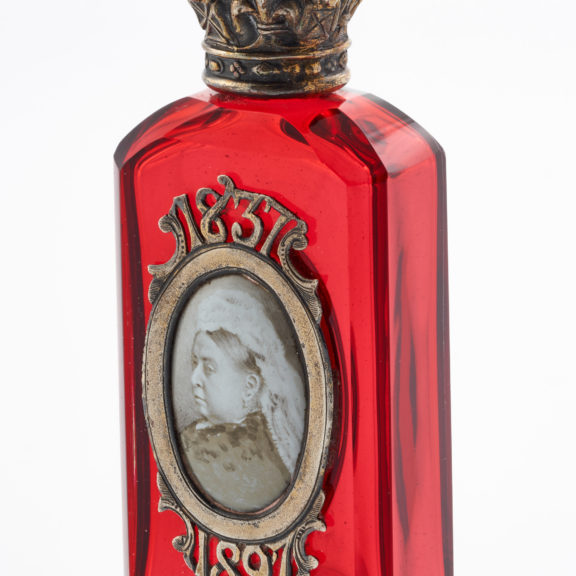
Queen Victoria Diamond Jubilee Scent Bottle
Object number: F299
This red scent bottle commemorated the Diamond Jubilee of Queen Victoria, celebrating sixty years of her being on the throne in 1897. Commemorative memorabilia like this were popular during this period. The bottle is made from red coloured glass, which developed rapidly during the nineteenth century, with Bohemia (now the Czech Republic) leading the way in coloured glass production. Glass was produced in every colour of the rainbow, thanks to modern manufacturing techniques and newly discovered pigments. Dark coloured glass, such as red, like this bottle, and blue, prolonged the life of the perfume, which could be damaged by light.
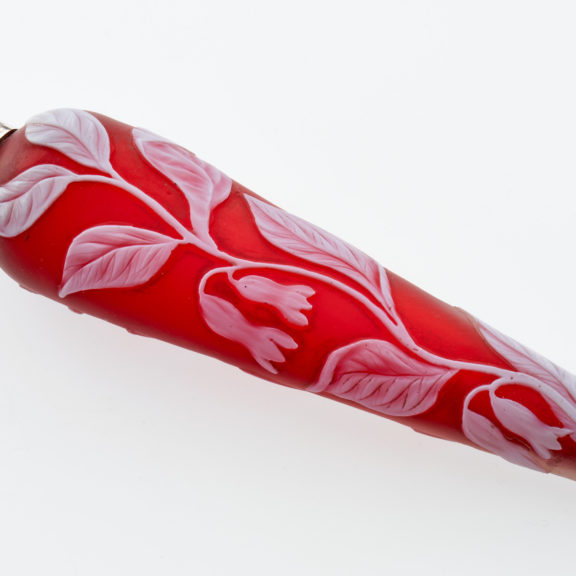
Red Cameo Glass Scent Bottle
Object number: F1673
This red scent bottle with its white leaf design is an example of cameo glass. Cameo glass is a Roman technique of producing white opaque glass designs on a darker glass background, however the technique was lost with the fall of the Roman Empire. One of the most famous pieces of roman cameo glass was the Portland vase, which was accidentally smashed in 1849. Creating cameo glass is complex as it needs more precision so a reward of £1000 was offered to the first person to make an accurate copy of it. In 1876, John Northwood, an English glassmaker made the first successful copy of the vase. During the 1880s, though expensive, the technique becoming more popular and after further technical developments it was used to create pieces like this scent bottle.
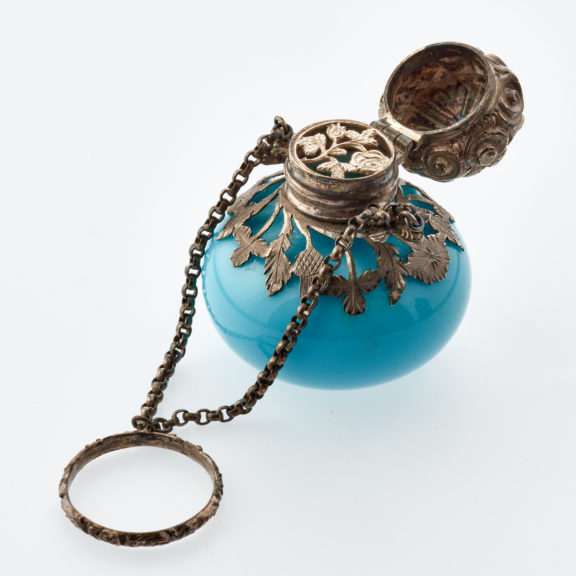
Blue Finger Ring Scent Bottle
Object number: F106
This scent bottle, made from blue coloured glass with decorative metalwork, was designed to be worn around a ladies’ finger. These bottles were often nicely decorated as they were worn at balls and for other public occasions. The bottle would be suspended from the middle finger and clutched in the palm of the hand, this would warm the perfume and mean it would emit an even stronger scent once the bottle was opened.
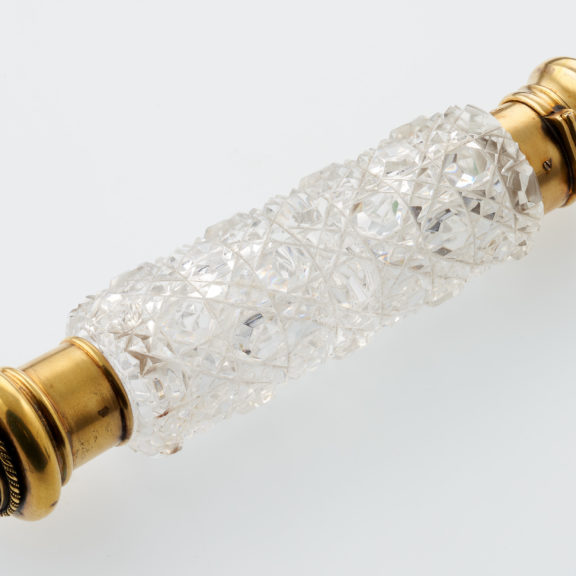
Smelling Salt Scent Bottle
Object number: F68
This is a smelling salts scent bottle made out of cut glass with decorative stone ends. These double ended bottles were made to hold perfume at one end and smelling salts or vinaigrettes at the other. Like this one the two ends usually have different types of lids, the scent end has a screw top lid over a glass ground stopper, while the smelling salt end has a hinged lid. Smelling salts, scented which rosemary, lavender, bergamot and cloves, were particularly popular in the nineteenth century. They were used to bring a lady around when she fainted, this was a common occurrence as corsets got tighter and tighter!
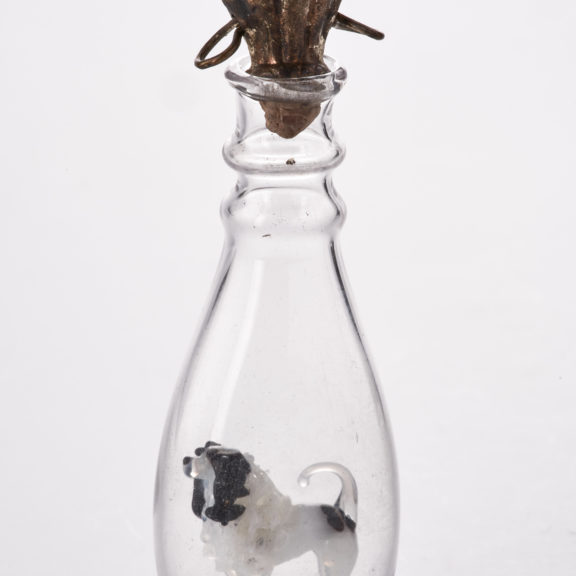
Novelty Dog Scent Bottle
Object number: F2004
This is a French novelty clear glass scent bottle containing a tiny glass dog! During the Victorian period there was a fascination with novelties and people liked perfume bottles that were made in shapes. Some of these bottles were shaped like animals, fruit, nutshells, and eggs or contained unexpected funny surprises like this little dog, which is no bigger than a small thumbnail!
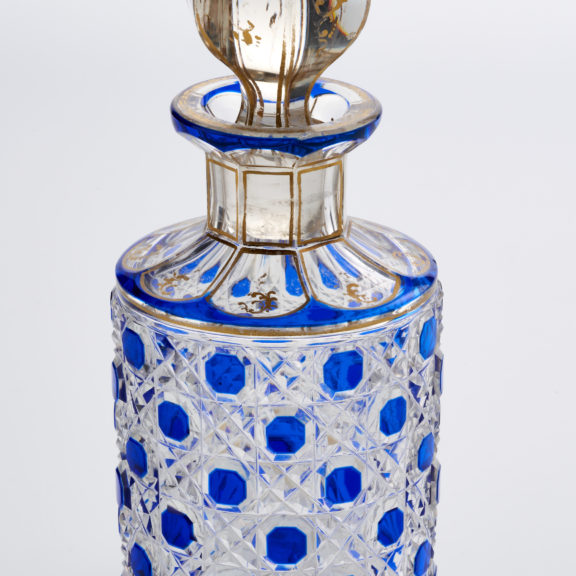
Toilet Water Bottle
Object number: F2594
This is a clear cut glass toilet water bottle with blue decoration and gold gilding. Toilet water bottles like this are generally larger than ordinary perfume bottles and were kept on the dressing table. Toilet water bottles use a dilute scent based alcohol that is cheaper to buy and lasted longer as it rarely turned rancid. It became very popular during the Victorian period because the more subtle fragrances were seen as more suitable for a lady to wear, rather than heavy perfumes. The most famous toilet water was known as cologne, which emerged at the end of the seventeenth century. In the nineteenth century lavender water became a hugely popular toilet water and is still seen as quintessentially English today.
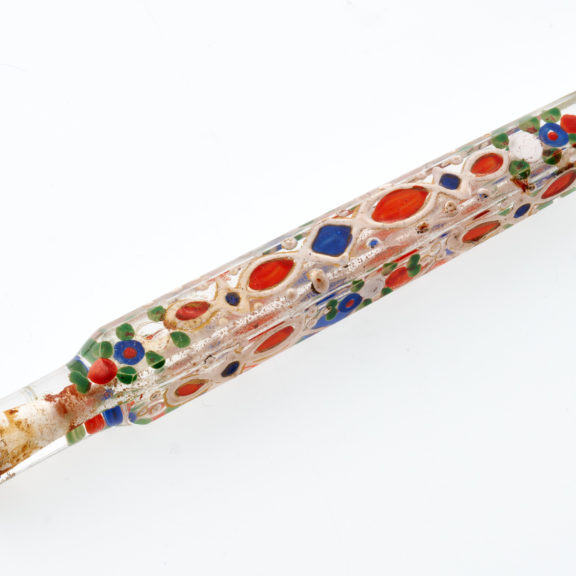
Attar Bottle
Date: Nineteenth Century
Object number: F58
This is a clear glass attar bottle decorated in red, blue, green and gold enamelling. The term attar describes an essential oil extracted by distillation. The word comes from the ancient Persian atr jul meaning ‘fat of the flowers’. Attar bottles were made in England and Bohemia (present day Czech Republic) from coloured glass, often decorated with gilding and enamelling like this one. These small bottles were bought, containing scent, over the counter from chemists and perfumers and were often thrown away once they were empty. The bottles were also known as ‘throwaways’ and ‘Oxford Lavenders’. The bottles would contain attar (or otto) of roses, which is an expensive essential oil made from rose petals so would only be bought in small amounts.
